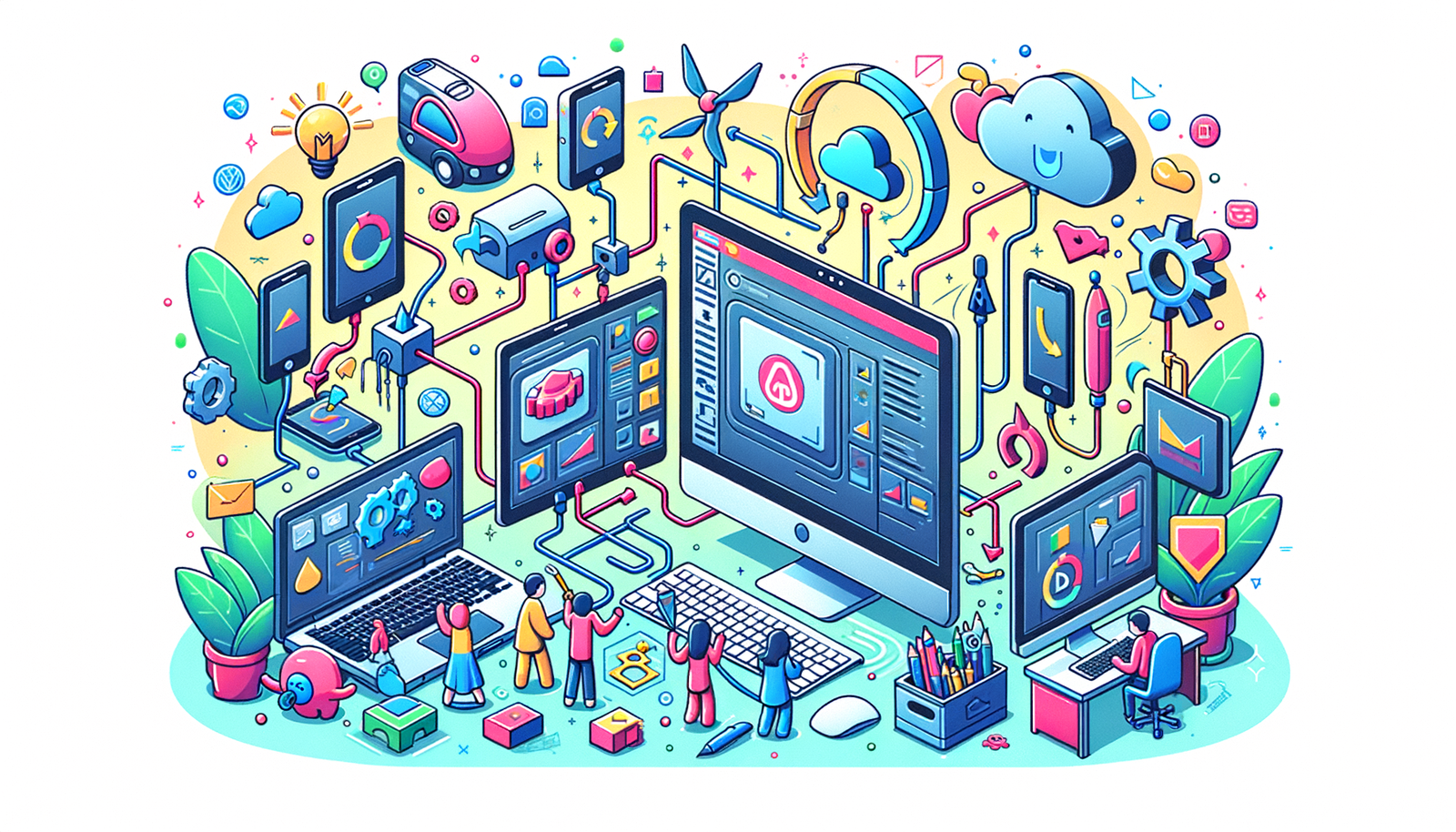Your Cart is Empty
Customer Testimonials
-
"Great customer service. The folks at Novedge were super helpful in navigating a somewhat complicated order including software upgrades and serial numbers in various stages of inactivity. They were friendly and helpful throughout the process.."
Ruben Ruckmark
"Quick & very helpful. We have been using Novedge for years and are very happy with their quick service when we need to make a purchase and excellent support resolving any issues."
Will Woodson
"Scott is the best. He reminds me about subscriptions dates, guides me in the correct direction for updates. He always responds promptly to me. He is literally the reason I continue to work with Novedge and will do so in the future."
Edward Mchugh
"Calvin Lok is “the man”. After my purchase of Sketchup 2021, he called me and provided step-by-step instructions to ease me through difficulties I was having with the setup of my new software."
Mike Borzage
Enhancing Design Collaboration and Efficiency Through Cross-Platform Integration in CAD Systems
October 28, 2024 4 min read


In today's rapidly evolving design industry, the ability to integrate various software platforms is becoming increasingly critical. Cross-platform integration in Computer-Aided Design (CAD) systems refers to the seamless collaboration and data exchange between different CAD software used by professionals across various disciplines. This integration is significant because it allows for a more collaborative and efficient design process, breaking down barriers that traditionally existed due to software incompatibility. As projects become more complex and interdisciplinary, the need for different teams to work together using their preferred tools without hindrance is paramount.
Understanding Cross-Platform Integration in CAD Systems
Cross-platform integration is the process of enabling different CAD systems to work together harmoniously, allowing for the sharing and modification of design files across various software platforms. This capability is essential in the design industry, where architects, engineers, and designers often use specialized tools tailored to their specific needs. Commonly used CAD systems include AutoCAD, SolidWorks, CATIA, Revit, and Rhino, each offering unique features suited to different aspects of design and engineering. For instance, AutoCAD might be preferred for general drafting, while SolidWorks is favored for mechanical design, and Revit for architectural modeling.
The challenge arises when these different systems need to interact. Each CAD software often uses proprietary file formats and data structures, making it difficult to open or edit files in a different program. This incompatibility leads to significant issues in collaborative environments where teams might not all use the same software. The inability to integrate different platforms can result in data loss, increased time spent on file conversions, and potential errors in the design process. Thus, understanding and addressing these compatibility challenges is crucial for improving overall efficiency and fostering better collaboration in multidisciplinary projects.
Benefits of Cross-Platform Integration
Implementing cross-platform integration in CAD systems brings numerous benefits that significantly enhance the design and engineering workflow. One of the primary advantages is improved collaboration among teams using different design tools. When systems are integrated, team members can share and modify design files without worrying about software compatibility issues. This seamless interaction reduces misunderstandings and errors, as everyone works from the most current version of the design, regardless of the software they are using.
Another key benefit is the increased efficiency in workflow management. Cross-platform integration eliminates the need for time-consuming file conversions and the associated risk of data loss or corruption. Designers can focus on their work rather than troubleshooting technical issues related to software incompatibility. This efficiency is particularly valuable in fast-paced project environments where deadlines are tight, and the ability to make quick, collaborative decisions is essential.
- Reduction in time spent on resolving compatibility issues.
- Enhanced accuracy due to consistent data across platforms.
- Greater flexibility in using specialized tools as needed.
These benefits collectively lead to better project outcomes. Projects can be completed more quickly, with higher quality, and with greater innovation as teams are able to leverage the best tools available without restriction.
Strategies for Achieving Effective Integration
Achieving effective cross-platform integration requires a strategic approach that addresses both technical and organizational aspects. Technically, one of the foundational strategies is the use of standardized file formats. Formats like STEP (Standard for the Exchange of Product Data) and IGES (Initial Graphics Exchange Specification) are neutral formats that allow different CAD systems to exchange data with minimal loss of information. Utilizing these standards ensures that basic geometric data can be shared across platforms.
Another technical approach involves the use of Application Programming Interfaces (APIs). APIs allow developers to create custom solutions that enable different software applications to communicate effectively. By leveraging APIs, organizations can develop middleware or plugins that bridge gaps between disparate systems. Middleware acts as an intermediary layer that translates data and commands between different applications, facilitating smoother integration.
From an organizational standpoint, best practices include investing in training and resources that support a cross-platform approach. This involves educating team members on how to use integration tools effectively and promoting a culture of collaboration. Organizations should also stay informed about the latest developments in integration technologies and be willing to adapt their workflows accordingly.
- Adopting universal standards for data exchange.
- Investing in middleware solutions and custom APIs.
- Providing ongoing training to keep skills up-to-date.
By combining these technical strategies with organizational support, companies can significantly enhance their ability to integrate different CAD systems, leading to more efficient and effective design processes.
Future Trends in Cross-Platform Integration
Looking ahead, the landscape of cross-platform integration in CAD systems is poised for significant evolution. One of the primary trends is the increasing role of cloud computing in design workflows. Cloud-based CAD solutions offer inherent advantages in terms of accessibility and collaboration, as they allow multiple users to work on the same design in real-time from different locations and devices. This shift towards cloud platforms will likely necessitate new integration solutions that can handle the dynamic nature of cloud-based data.
Another emerging trend is the incorporation of Artificial Intelligence (AI) in integration processes. AI can automate the conversion and optimization of design data between different platforms, reducing the manual effort required and minimizing errors. Machine learning algorithms can learn from previous integration tasks to improve accuracy over time, leading to more seamless interoperability.
Open-source initiatives and standardization efforts are also gaining momentum. Organizations and industry groups are increasingly advocating for open standards that promote interoperability. By participating in these initiatives, software developers can create more compatible systems from the ground up, reducing the reliance on after-the-fact integration solutions.
Finally, we can expect to see the development of more sophisticated APIs and middleware that can handle complex data types and support advanced features across platforms. These tools will be essential as designs become more intricate and require richer data exchanges.
Conclusion
Cross-platform integration plays a critical role in advancing design workflows by enabling seamless collaboration and data exchange between different CAD systems. As the design industry continues to embrace multidisciplinary approaches and complex projects, the ability to integrate diverse software tools becomes not just beneficial but essential. Staying adaptable and current with technological advancements is crucial for organizations and professionals who wish to remain competitive and innovative.
Embracing cross-platform integration is a call to action for all design professionals. By adopting integration strategies and leveraging emerging technologies, teams can drive innovation and efficiency in their projects. The future of design is interconnected, and those who proactively engage with integration efforts will lead the way in shaping the industry's evolution.
Also in Design News

Rhino 3D Tip: GPU Optimization for Rhino Render (Cycles), V-Ray, and Real‑Time Plugins
January 01, 2026 2 min read
Read More
Cinema 4D Tip: Efficient Lookdev Iteration Using Cinema 4D Picture Viewer History
January 01, 2026 2 min read
Read More
Revit Tip: Standardized Revit Export for Reliable Navisworks Clash Detection
January 01, 2026 2 min read
Read MoreSubscribe
Sign up to get the latest on sales, new releases and more …


